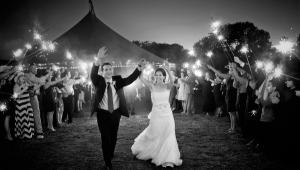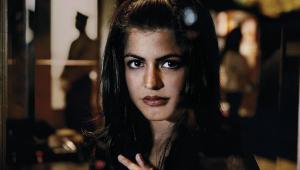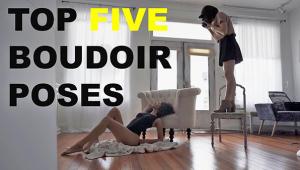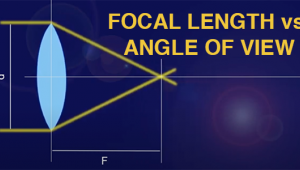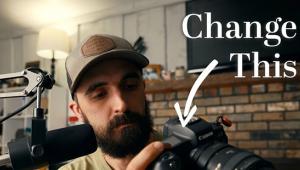The true essence of photography is found in the quality of the photos that is provided by the one who is capturing it. - Larry Starr Sarasota
The Art & Craft Of Posing; Tips And Techniques From Two Wedding Pros Page 2
Florens considers himself a bit of an expert on photographing people and claims he can read their personalities in 2 or 3 minutes time. “I think wedding and social photographers need that ability in their arsenal of talents to bring the best out of their subjects. Sometimes I don’t see clients before a wedding because they may be living in another city and aren’t able to have a pre-wedding meeting. I have 2 or 3 minutes to assess who they are, what they want, how they’re going to look in photographs, and how to pose and direct them.”
Florens believes in utilizing the information and experience gained over the years to execute poses in the correct environment and context rather than using poses for the sake of posing. “A lot of photographers try too hard to make their subjects look like models and instead, they wind up looking a little uncomfortable. Also, if you have a set repertoire of standard poses that you push off week after week, it’s not going to work,” explains Florens, who feels not all poses work on all people. “It’s really important to adapt poses to the client,” he reiterates. “You can’t be rigid; you have to be flexible.”
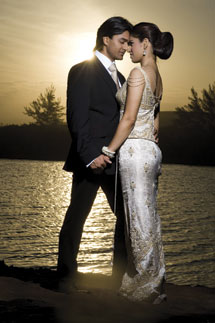 |
|
|
Like many top wedding photographers, Florens keeps up with the current trends and poses and draws inspiration from high fashion magazines such as Vogue, Harper’s BAZAAR, and Vanity Fair. “My style of photography is very editorial and I want my images to look like they belong in a fashion magazine. I purchase and read the really high-end British fashion magazines that all my clients read, because they look to those magazines for inspiration for their weddings as well. My clients are not necessarily fashionistas, but they keep current and up-to-date with trends.” Florens says most of his inspiration comes from fashion photographers and he likes the work of Patrick Demarchelier, in particular. He also looks at fashion magazines for the lighting and may “borrow” three or four poses from any given issue. “You take away from it what you think is great because there is stuff that’s absolutely ridiculous.”
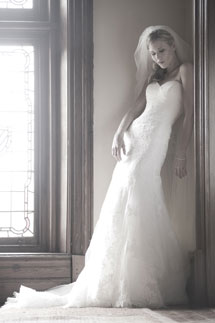 |
|
|
Although bridal magazines would appear to be a good source of inspiration for wedding photographers, for the most part, Florens says, they’re not. “I think the companies that are advertising (in bridal magazines) are not aligning themselves to what they want to be creating. Instead, they’re advertising what they think clients want to see (stereotypical outfits using stereotypical poses); and I think they’ve got it wrong.” He notes that wedding DJs are a prime example of this out-of-sync style. “There are hundreds of wedding songs to choose from, yet they play the same tired songs over and over again. Why do people have to dance to YMCA (or the Electric Slide or the Macarena)?”
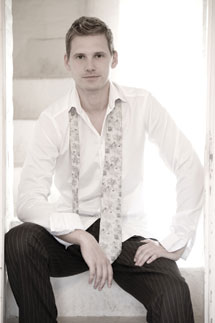 |
|
|
Stereotypical poses do have their place, however. “You need to take them for various clients,” Florens explains, “because you’re not just shooting for the bride. I try to make the whole process as balanced as possible, which includes high fashion poses, natural candid moments that you can’t pose, and poses that are more designed for mom and dad or the grandparents. They’re not necessarily traditional, boring pictures, but rather photos that grandparents typically expect and like.” Traditional poses also allow Florens to make more money on reprints from wedding guests.
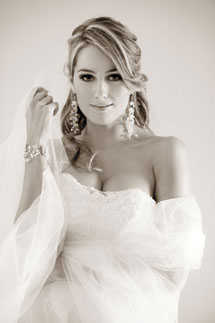 |
|
|
Outdated Poses And Extremism
While some photographers run the risk of being too fashion forward with their poses, others can be decades behind, producing photographs that are nicely posed but hopelessly outdated (e.g., a bride sitting on the ground surrounded by bridal party bouquets). For Gordon, a pose is outdated when it starts looking like everybody else’s and it no longer sells. “You know it’s outdated when you’re not making money or you’re bored. I’m never bored because I’m constantly evolving and training,” states Gordon, who notes that 13 years ago his version of flow posing was 10 poses in 5 minutes (now it’s 60). “The funny part is that people think that I number the poses for teaching purposes. I number them because I want to know how many times pose #37 sold. If it’s not selling,” he reiterates, “then I’m not doing something right.” On the other hand, if you’re bored, Gordon says, you either update what you’re doing or get out. “If you change the way you think, your world will change forever. People live by the dumb motto: ‘If it ain’t broke, don’t fix it.’ If it ain’t broke, then you’re not looking hard enough to find what’s wrong with it, because there’s always a way to improve something. Always.”
Florens also notes there are posing ideas, and one or two stick around for a while, like railroad tracks. “Suddenly,” Florens notes, “everybody’s on railroad tracks. What is that all about?” The smoke machine, he notes, is another now pass idea. Then there’s the current “trash the dress” phenomenon, which has been around about four or five years. “I think the extremism is getting a little out of hand. I’ve seen images in studios where they’re throwing paint at the backdrop and the dress, and burning crosses in cemeteries with the bride lying on a gravestone. I don’t see the relevance and I think it’s done almost for shock value. I am particularly against the term ‘trash the dress’ because it sounds like you’re purposely destroying something beautiful. I target high-end brides,” Florens explains, “and if they’re wearing a beautiful Vera Wang or Armani gown, they’re not going to do things like that. They’re definitely not looking to shock anyone.” This isn’t to say Florens doesn’t appreciate images that are somewhat edgier, but he schedules those photo sessions for sometime after the actual wedding.
Finally, Florens thinks many photographers are simply trying too hard. “They forget the reason why they were employed to do the job in the first place,” he states. “Photographing a wedding is a big responsibility. You need to manage your clients’ expectations in a way that they have confidence you’ll do the job the way you promised in terms of your portfolio and what you’ve produced in the past.”
Florens believes photographers should develop their photographic personality and “take” on wedding photography by learning from things that happen naturally, then improving upon those things in order to end up with a structured way to work that isn’t formulaic. “There’s a big difference between my work now and five years ago. I’ve evolved as a photographer, but it’s a slow process.” That change, he concludes, doesn’t take place overnight; it happens one wedding—and one pose—at a time.
For more information about Brett Florens, visit: www.brettflorens.com.
For more information about Doug Gordon, visit: www.patkenphotographer.com, or www.douggordonworkshops.com, his educational site.
- Log in or register to post comments











